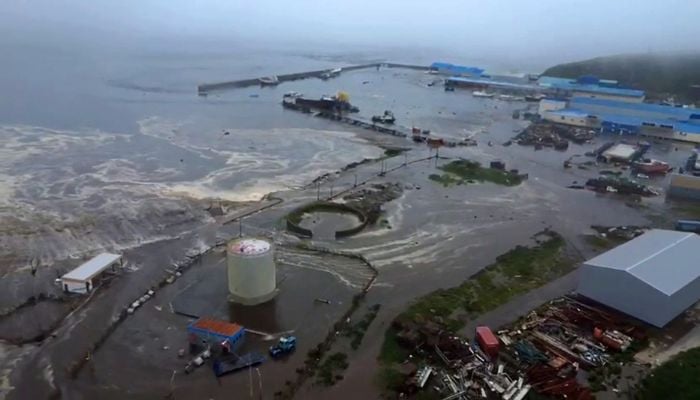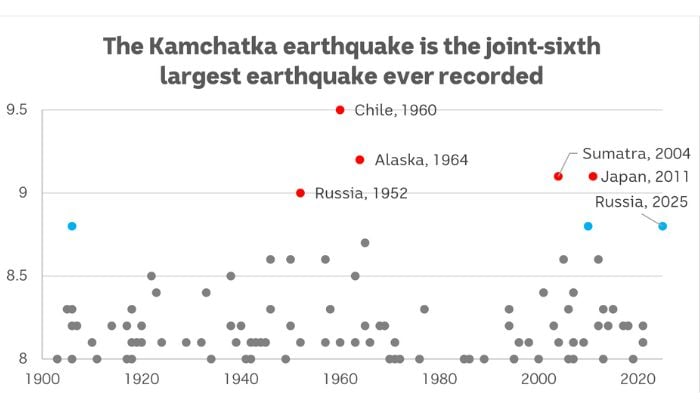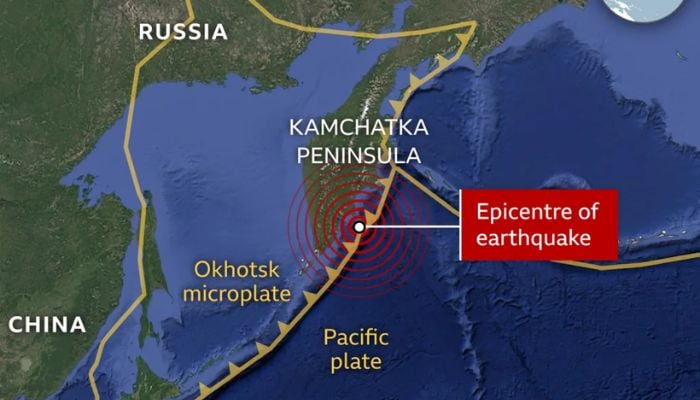Russia has experienced one of the strongest earthquakes ever recorded with the intensity of 8.8-magnitude on Wednesday, July 30.
The massive megathrust quake sent a shockwave of fear among the coastal populations across the Pacific, reminiscing the devastation caused by the quake-induced tsunami of Boxing Day 2004 in Indian Ocean and Japan 2011.
The colossal earthquake that hit Kamchatka Peninsula has spawned tsunami warnings across the Pacific.
Fortunately, the tsunami has been much less severe than the experts feared, bringing minimal damage for the Pacific countries.
What is a megathrust earthquake and what causes it?
The outer layer of Earth is divided into 15 slabs which are known as tectonic plates. The “Pacific Ring of Fire” is the arch that surrounds the tectonic plates. According to the British Geological Survey, 80 percent of earthquakes happen along this ring.
These plates slowly move around, a few centimetres every year and get stuck against each other due to friction.
In some cases, the friction can accumulate over thousands of years and can instantly be released within minutes.
Megathrust earthquakes occur due to a phenomenon called “subduction” when one tectonic plate has been forced underneath another.
In Wednesday’s scenario, it was the Pacific plate beneath the North Plate that caused a massive shake up.
Dr Stephan Hicks, lecturer in environmental seismology at University College London, explained, “When we typically think about earthquakes, we imagine an epicentre as a small point on a map. However, for such large earthquakes, the fault will have ruptured over many hundreds of kilometres. It is this vast amount of slip and area of the fault that generates such a high earthquake magnitude.”
The largest megathrust earthquakes recorded in history occurred in Chile, Alaska and Sumatra. And Kamchatka Peninsula is also prone to such mega quakes.
Why wasn’t the tsunami as destructive as experts feared?
Tsunamis occur as the result of the earthquakes, lifting the ocean bed and displacing the large amount of ocean water.
The intensity and severity of tsunamis depends on how much ocean bed is lifted.
The record-breaking earthquake in Kamchatka prompted the fears of destructive tsunamis across the Pacific. However, the minimal damages were recorded due to the tsunami.
In Kamchatka, waves of 5 metres were observed- a one-tenth of the heights recorded after the Tohoku Earthquake in 2011. In Hawaii, these waves showed regression, reaching a height of about 1.7 metres.
The one reason behind these moderate waves is the distance between waves. As the distance between the waves shortens, they grow in height, creating a wall of water near the coast.
According to Prof Lisa McNeill, professor of tectonics at the University of Southampton, “The height of the tsunami wave is also affected by local shapes of the seafloor near the coast and of the land where it arrives,”
“These factors along with how populated the cost is, affect how serious the impact is,” she added.
Another significant reason behind the minimal damage is the presence of better early warning systems.
Being prone to high occurrences of earthquakes, the Pacific countries have developed tsunamis centres to announce the early evacuations.
Related: Russia quake could trigger volcano eruptions across Pacific Ring of Fire


